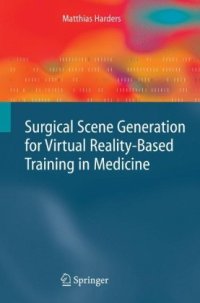
Ebook: Surgical Scene Generation for Virtual Reality-Based Training in Medicine
Author: Matthias Harders (auth.)
- Genre: Medicine
- Tags: Computer Graphics, General Surgery, Image Processing and Computer Vision, Medical Education
- Year: 2008
- Publisher: Springer-Verlag London
- Edition: 1
- Language: English
- pdf
One of the most important elements needed for effective training in Virtual Reality (VR) is the generation of variable scenarios. Without this, trainees quickly become familiar with a scene and the natural variations encountered in real-life situations cannot be reproduced. Generating such models in VR-based applications is difficult, but with the increase in computational power (allowing for larger and more finely-detailed virtual environments) there is an increasing demand for improved methods for model acquisition, enhancement, optimization and adaptation.
The field of medicine lends itself very well to VR-based training particularly in the area of surgery. In this book Matthias Harders examines the main components needed when defining effective scenarios:
• scene geometry
• organ appearance
• biomechanical parameters
providing an extensive overview of related work and introducing specific solutions in detail.
With plenty of examples to show the outcome and performance of the methods presented in the book, this will be an essential resource for all those involved in generating training scenarios in medical education, as well as in VR-based training in general.
One of the most important elements needed for effective training in Virtual Reality (VR) is the generation of variable scenarios. Without this, trainees quickly become familiar with a scene and the natural variations encountered in real-life situations cannot be reproduced. Generating such models in VR-based applications is difficult, but with the increase in computational power (allowing for larger and more finely-detailed virtual environments) there is an increasing demand for improved methods for model acquisition, enhancement, optimization and adaptation.
The field of medicine lends itself very well to VR-based training particularly in the area of surgery. In this book Matthias Harders examines the main components needed when defining effective scenarios:
• scene geometry
• organ appearance
• biomechanical parameters
providing an extensive overview of related work and introducing specific solutions in detail.
With plenty of examples to show the outcome and performance of the methods presented in the book, this will be an essential resource for all those involved in generating training scenarios in medical education, as well as in VR-based training in general.